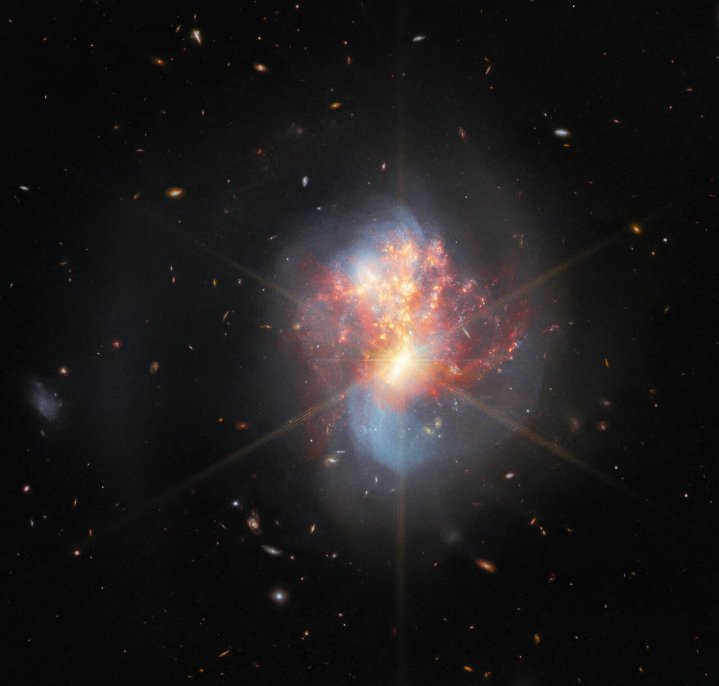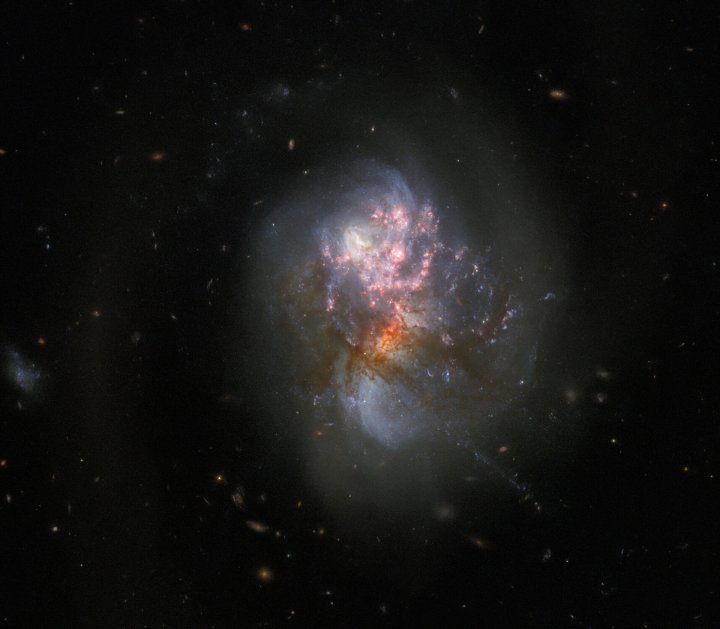A recently released image from the James Webb Space Telescope shows the stunning galaxies IC 1623 A and B, located 270 million light-years away, which are in the process of merging. As the two galaxies crash together, they are intersecting and feeding high levels of star formation, creating an area known as a starburst region.
James Webb captured the image using three of its instruments: MIRI, NIRSpec, and NIRCam. Each instrument looked in a different portion of the infrared to see the different features of the merging galaxy. “This interacting galaxy system is particularly bright at infrared wavelengths, making it a perfect proving ground for Webb’s ability to study luminous galaxies,” Webb scientists write.

The rapid formation of stars occurs as tidal forces from the gravity of the two galaxies tug at clouds of dust and gas, spurring the birth of new stars. It is also thought that as the two galaxies merge, they may be forming a new supermassive black hole.

The same merging pair of galaxies were previously imaged using the Hubble Space Telescope’s Advanced Camera for Surveys and Wide Field Camera 3 instruments. Taken in the visible light range, this image shows the equivalent of what the human eye would see when looking at the galaxies. The galaxies are darker, particularly in the center, as parts of the image are obscured by dust. By comparing this image to the Webb image above, you can see how Webb’s infrared instruments can peer through the dust to see the structure beneath.



